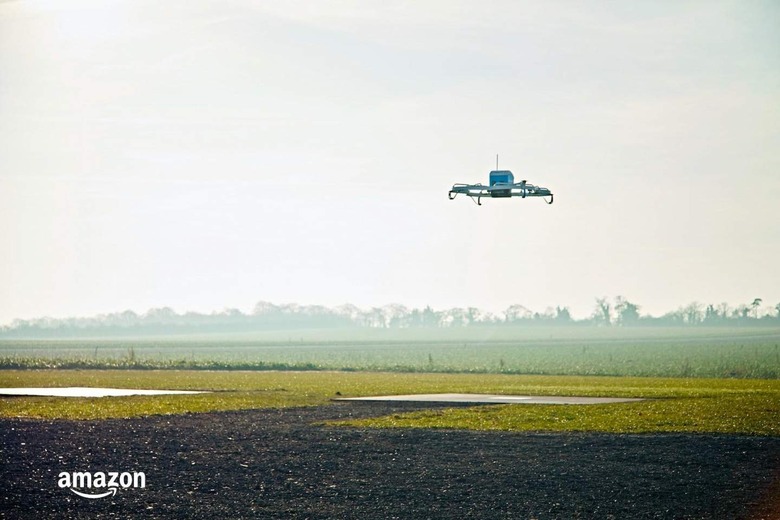Amazon's Delivery Drone Plans Are Reportedly Crashing
Amazon Prime Air may have promised a zippy world of drone deliveries, but the retail behemoth is grounding the fleet in at least one country according to a new report. Announced in 2016, Prime Air was billed as the next generation of super-timely delivery options, bypassing roads in favor of flying directly to shoppers with smaller, urgent items.
Those items would have to be fairly compact and lightweight, of course, in order to be flight-compatible. However, just as long as they were under 5 pounds and sufficiently small to fit into the custom drones' cargo boxes, they could be delivered within 30 minutes as long as shoppers were within 10 miles of a participating order fulfillment center.
Certainly, the idea of even faster rush shipping seemed like an intriguing idea, even with those qualifying factors, but Prime Air's path to operations proved to be a tricky one. While Amazon initially planned to start operations in late 2019, issues around drone regulations, operator restrictions for line-of-sight and autonomous pilots, and other challenges pushed that roadmap back.
In December 2016, Amazon UK demonstrated a Prime Air delivery in Cambridge, England. Later that month, it began a public trial of the service, again within that same area. Now, though, it seems that trial is winding down, at least in part.

Over 100 employees at Amazon Prime Air have lost their jobs, and others have been moved to other projects, according to Wired UK. Prime Air is "collapsing inwards" insiders say, with high staff turnover through the past few years. A changing roster of management has apparently included logistics experts highly familiar with warehouse operations, but with little to no knowledge about the complexities of drones.
Amazon has declined to say how many people are still working on the project. However it insists that there are still Prime Air employees on the UK trial, and that there will be "a Prime Air presence in the UK after the cuts," according to the report.
Part of the issue may have been Amazon's initial ambitious plans for Prime Air. The drones, for example, not only needed to fly themselves, but identify a suitable depositing point for the package. That required investment – both in employee time and money – in machine learning around distinguishing gardens from hazards like ponds and pools, spotting people and objects that the drone should avoid, and other factors. Increasingly heavy drones, meanwhile, uprated so as to carry larger cargo payloads, then nudged the aircraft into more regulation-intensive categories, adding new complexity to the flight and safety software.
According to Amazon, the fact that regulatory clearance for drone deliveries in the US was granted last year means automated flights can begin in America at some point. The retailer did not share extra details on when that pilot may roll out.
